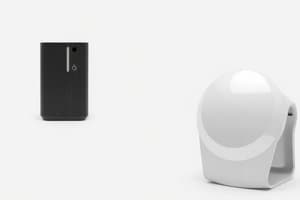Podcast
Questions and Answers
What is the primary focus of user experience (UX) design?
What is the primary focus of user experience (UX) design?
- Enhancing the overall experience of using a product (correct)
- Considering how the brand will perform in the marketplace
- Maximizing return on investment for the product
- Conducting market research and competitor analysis
Which stage of the product design process involves generating creative solutions and developing multiple options?
Which stage of the product design process involves generating creative solutions and developing multiple options?
- Ideate (correct)
- Empathize
- Define
- Prototype
Which of the following is NOT a tool or technique used by product designers?
Which of the following is NOT a tool or technique used by product designers?
- Branding skills
- Computer-Aided Design (CAD)
- Bill of Materials (BOM)
- Focus groups (correct)
Which of these resources does NOT provide information on product design?
Which of these resources does NOT provide information on product design?
What is the primary purpose of a Bill of Materials (BOM) in product design?
What is the primary purpose of a Bill of Materials (BOM) in product design?
Study Notes
Product Design
Introduction
Product design is the process of blending user needs with business goals to produce successful products. It encompasses various stages, from initial ideation and research to testing and iteration. Good product design focuses on understanding users' needs and solving real-world problems rather than solely creating aesthetically pleasing items. Essential skills for product designers include human-centered approach, problem-solving, systems thinking, prototyping, iteration, design research, technical know-how, teamwork, collaboration, communication, diplomacy, and video production.
Principles and Approaches
Design Thinking
Design thinking is a method for resolving problems that focuses on the user experience. It was coined by David Kelley and Tim Brown of IDEO and involves understanding business objectives before addressing the interaction and visual aspects of a product. Key stages in design thinking are empathizing with users, defining their needs, ideating potential solutions, prototyping concepts, testing them, and iterating based on feedback.
Product Vision and Strategy
Defining product vision and strategy early in the process helps align teams and create successful products. The product vision captures the essence of what the product should achieve, while the strategy defines its journey. Having a clear vision and strategy ensures that everyone involved understands the project's goals and direction.
User Experience
User experience (UX) is a subset of product design, focusing on enhancing the overall experience of using a product. UX designers conduct research, create personas, and ensure designs meet user needs. However, product designers also consider how the brand will perform in the marketplace over time, guiding development decisions to maximize return on investment.
Process
The product design process includes several stages:
- Empathize: Learn about your users through research, interviews, and observation.
- Define: Create a point of view based on user insights and define the problem you aim to solve.
- Ideate: Generate creative solutions and develop multiple options.
- Prototype: Build a physical or digital representation of your ideas to test.
- Test: Obtain feedback from users on your prototype and refine your solution.
- Post-launch activities: Continue gathering user feedback and making improvements after launching the product.
Tools and Skills
Product designers use various tools and techniques to enhance their skills and create better products. Examples include:
- Computer-Aided Design (CAD): Software used to create and analyze 3D models of automotive parts and assemblies.
- Bill of Materials (BOM): Helps improve cost estimation for product design and manufacturing.
- Design Thinking: Techniques for generating creative and relevant ideas for product design.
- Cross-platform tools: Software that improves product design across different operating systems and browsers.
- Branding skills: Develop a strong identity for your product designs.
- Ergonomics: Focus on creating products that fit the needs of diverse users.
- Prototyping and Iteration: Continuously refine designs based on feedback.
- Teamwork and Communication: Collaborate effectively with specialists from various fields.
Educational Resources
For those interested in learning more about product design, several resources are available:
- Interaction-design.org offers courses for creating a UX portfolio, design podcasts, and articles on topics related to product design.
- LinkedIn provides a collection of articles covering various aspects of product design, including user research, CAD software usage, bill of materials management, part count reduction strategies, and ergonomic design approaches.
- Refind lists top product design articles and videos, including tips on wireframing, minimum lovable products (MLPs), opportunity solution trees, and startup MVPs.
Remember, becoming proficient in product design requires dedication, practice, continuous learning, adaptability, and a deep understanding of design principles and human behavior.
Studying That Suits You
Use AI to generate personalized quizzes and flashcards to suit your learning preferences.
Description
Explore the principles, approaches, and process involved in product design, focusing on user needs, business goals, and problem-solving. Learn about design thinking, product vision, user experience, and essential tools and skills for product designers. Enhance your understanding of the product design process from empathy and ideation to prototyping, testing, and post-launch activities.




